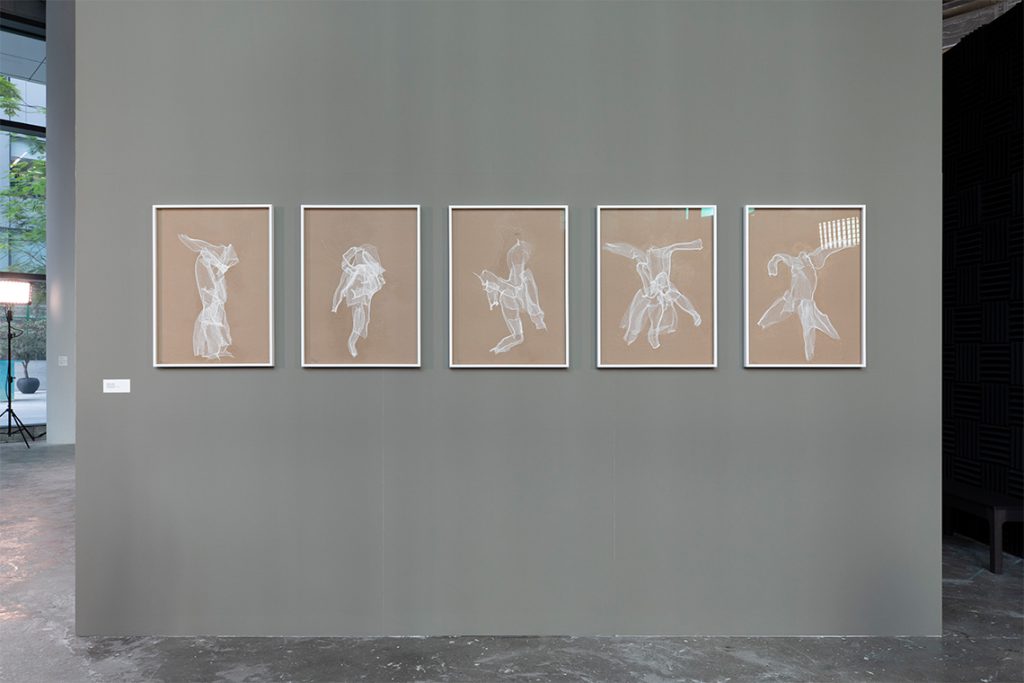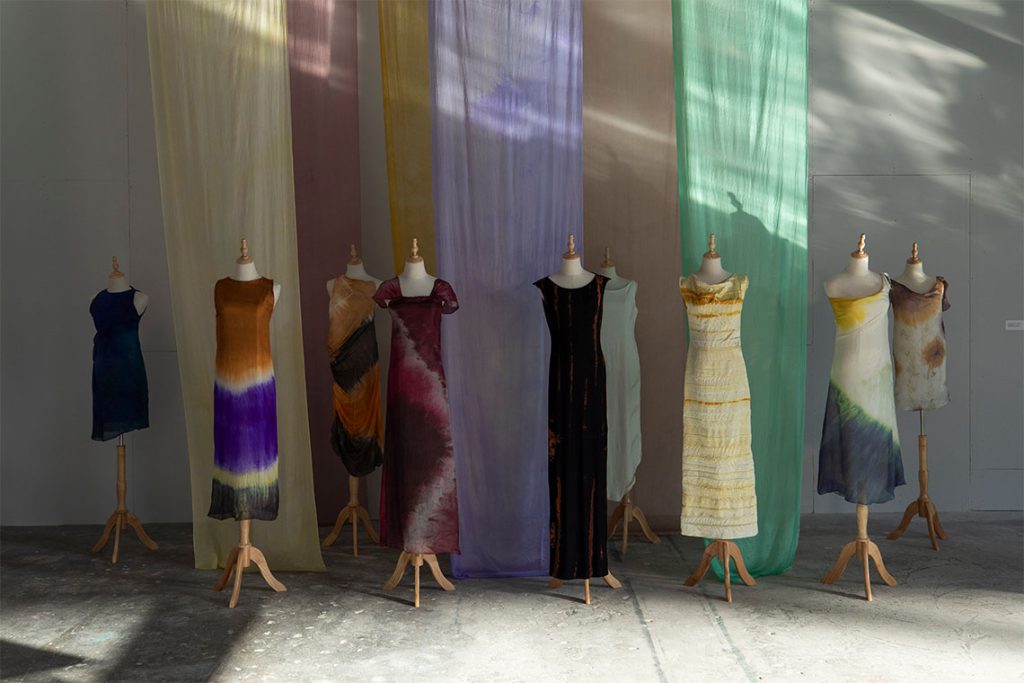The recent exhibition Water like Tears, Flour like Soil, at ICD Brookfield Place in Dubai, underlined the power of artistic creativity in Palestinian resistance.
An array of mysterious sounds were instantly compelling as one entered the curiously titled exhibition Water Like Tears, Flour Like Soil (ended 4 December). Playing at different times and permeating the grey, industrial-like space were the deep pangs of an oud, the voices of children reading aloud, an angelic chant and the passionate reciting of verse by the Palestinian poet Mahmoud Darwish. “Beware of my hunger and my anger,” he warned.
The sonic element of the show was paired with a visual display of artworks that ranged across sculpture, painting, photography, film, textiles and mixed media, produced by 19 Palestinian and international artists. All participants are in one way or another connected to Palestine, the central element of the exhibition.
Curated by Camila Palomino, in collaboration with the Palestinian artist Emily Jacir, the show was a joint project between ICD Brookfield Place Arts in Dubai and Dar Jacir, an art and research initiative founded a decade ago by Jacir in Bethlehem and which hosts cultural activities at the institution’s headquarters, a nineteenth-century family home.
The title of the exhibition was based on an Arabic saying, exchanged between Palestinian women who bake and eat bread together as a grieving ritual while coping with loss. It also revolves around the deep connection between the body and the land: “Pour the water like tears upon the flour until it becomes like grains of soil.”

In the context of the decades-long Israeli occupation and ongoing violence in Palestine, the themes of land, remembrance, loss and resistance through art were central. But the exhibition also carried a message of hope and stressed the importance of community, as a statement released by the organisers made clear: “The participating artists unite in moments of creation and transformation guided by land, kinship and storytelling.”
On one wall of the exhibition were paintings created by an art couple from Gaza, Mohammed Al Hawajri and Dina Mattar. Survivors of the relentless Israeli bombardment, which began in October 2023, they managed to flee Palestine and restart their lives in the UAE. Luckily, they were able to salvage several of their works, which were on display. Al Hawajri showcased a selection of colourful acrylic paintings, populated by goats, from his Animal Farm (2014) series, inspired by his mother and memories of childhood and through which he highlights the vital relationship between animals and humans. Meanwhile, Dina Mattar’s small paintings, Untitled (From Above The Moon) (2024), are depictions of cubist figures in aspects of everyday life, from cars passing by to the interior of a home.
“I imagined myself living on the surface of the moon, gazing down at the small camp where I once lived, with its narrow streets, ancient houses and beautiful details,” Mattar has explained. “That was in 2008. I expressed all of this through cubist scenes in my own unique style, not realising that these paintings would one day bear witness to the geographical changes that have affected Gaza today.”

Nearby, another Gazan was highlighted. Hazem Harb presented five artworks from his Gauze Part Two series (2024), which he initially began working on following the 7 October attacks last year. On brown fine-art cardboard, he arranged strips of medical gauze as floating souls or dancing phantoms – still, yet kinetic. Exuding senses of subtlety and fragility, the works pay tribute to the historical status of his hometown as an epicentre of gauze production, as well as the lives that have been lost there.
Perhaps the most powerful part of the exhibition was its video programming, set in a large booth that was showcasing four short films on a large screen. In Shaheeq (2024), by Mohanad Smama and Dirar Kalash, choreographer Smama focuses on beauty amidst chaos while dancing against the backdrop of rubble in Gaza. Meanwhile, in Wherever you sow grain, the grain grows by Emily Jacir and Andrea De Siena, the two artists are joined by others in performing both contemporary dance and the traditional Palestinian folk dance, dabke, almost as an act of defiance.
A poignant film, Ver el mar (2022), conceptualised by Mexico City-based artist Stéphanie Janaina, shows shots of the contested concrete walls, full of graffiti, in Palestine. In several scenes, a non-ending list of children’s names – “killed during Israeli massacre in Palestine, July 2014” – appears, accompanied by the stark sound of children’ voices, previously recorded at Dar Jacir in collaboration with children from the Aida Camp in Bethlehem.

Nature and the environment were also explored in the show, with Anchor in the Landscape (2023) a particular standout. A large black-and-white image of a 4500-year-old olive tree, by photographers Adam Broomberg (a former resident at Dar Jacir) and Rafael Gonzalez, it highlighted the role of ancient olive trees as an enduring and potent symbol of Palestinian resilience in the face of land-grabbing and destruction by Israeli settlers. The ecological theme is explored further by Ramallah-based artist Ahmad Alaqra’s photography 2024 series, I Died a Thousand Times, in which he presents different shots of the native wild thistle plants found across the Palestinian landscape, tapping into cycles of life, death and renewal.
While rather isolated from the other works on display, an installation in one corner of the exhibition struck a particularly resonant note. Breathing Away (2024) comprised mannequins draped with simple yet vibrant dresses designed by former Dar Jacir resident Mohammed Hadia (aka Biishoss). Made of silk from Jerusalem and linen from Ramallah, the dresses were coloured using traditional natural dyes and have been described as a “love letter” to the Palestinian lands. They serve to underline how, despite the challenges imposed by the political situation in Palestine, Hadia and his contemporaries strive to deliver messages of perseverance and resistance: We are here. We will create. We will continue.



